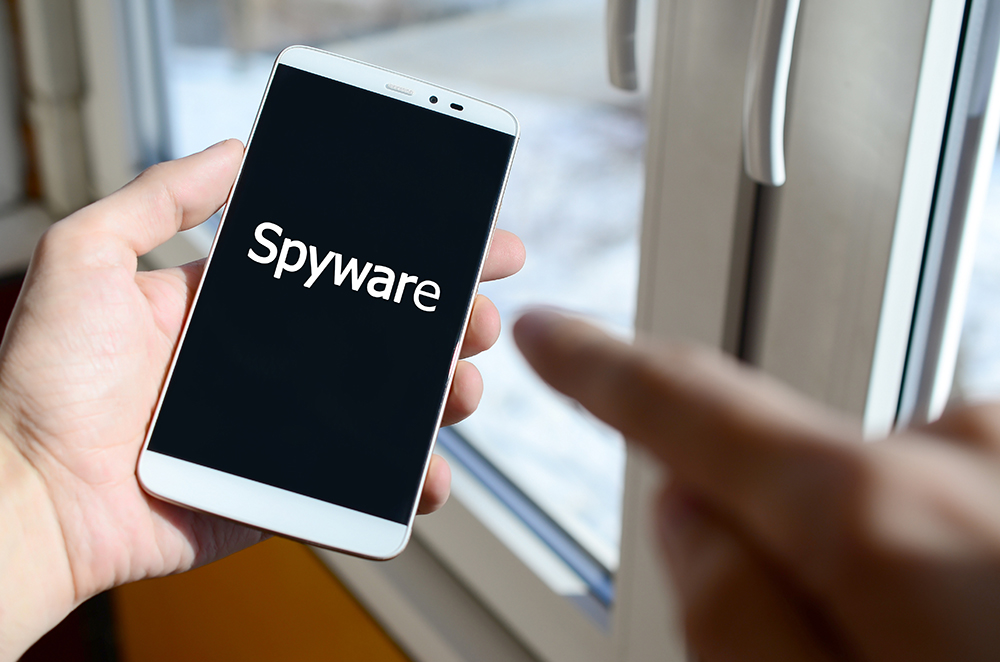Recently, there has been a lot of chatter about zero-click attacks being used against mobile devices. The most famous is Jamal Khashoggi, who was murdered in October 2018 at the Saudi Arabian consulate in Istanbul. His death sparked an investigation into his disappearance, which led to discovering that he had been infected with the Pegasus spyware through a zero-click attack. So, what exactly are zero-click attacks? Why should we care? Is this something that concerns us as everyday smartphone or tablet users? Should we be concerned with these types of attacks? Let’s discuss this.

Table of Contents
What Are Zero-Click Attacks?
A Zero-click attack occurs when hackers send malware or spyware to a device over the air that doesn’t require user interaction. This type of attack allows hackers to get around typical security measures such as antivirus software and firewalls.
The term “zero-click” comes from the fact that there is no need for the victim to take any action to install the malware. In other words, the malware installs itself without the user ever knowing anything is happening. There’s no human interaction required; all the hacker needs to do is send the malicious code via email or text message. Once the code gets installed, the attacker then uses social engineering tactics to convince the user to open up more files or visit websites that contain links to more malware.
Considering that there are no human errors involved in zero-click attacks, they’re much easier to execute than traditional hacking methods. Hackers don’t have to spend hours finding vulnerabilities or exploiting them, making their job much easier.
How Does It Work?
The first step in a zero-click attack is sending the malware over the air to a target. When their device receives the message, it automatically installs it on the victim’s device. Once the malware is installed, it begins working through your system.
Once the air-dropped message has sunk its claws into your device, it can start collecting information and uploading it back to the hacker. This includes everything from browsing history, your location 24/7, and contacts, and in some cases, they will be able to listen in on conversations.
If you think that sounds scary, it gets even worse. Some zero-click attacks can turn your phone into a remote control for the hacker. This means that they can remotely access all of your data, including files stored on your SD card, and they’ll have access to your phone’s history.
This is why it’s essential always to keep your phone updated with the latest version of Android and iOS. As well as keeping your apps up to date, you should also remove any third-party applications you don’t trust.
Zero-Click Attacks vs. Regular Malware
While there are similarities between zero-click exploits and regular malware, there are also some key differences:
The malware requires human interaction, whereas zero-click exploits require none.
Through human error, malware can spread through email spam campaigns, social media posts, websites, and other channels.
Zero-click exploits are automatically installed on your device with no interaction.
Malware often causes financial losses.
Zero-click attacks can cause loss of privacy and identity theft.
Malware spreads quickly and silently.
Zero-click exploits spread slowly and quietly.
Malware usually has a single purpose.
Zero-click exploits can have multiple purposes.

Is There Anything We Can Do About This Zero-Click Vulnerability?
Unfortunately, zero-click attacks aren’t going anywhere anytime soon, and we don’t know how to stop them, but here are some best practices we recommend.
1. Always keep your mobile devices updated. It is recommended that you update your OS (Operating System) and any other applications that you have installed. If you find updates available, install them immediately so that you can enjoy the latest features and bug fixes.
2. Use strong passwords. Make sure that you choose unique and complex passwords for all accounts. It would be best never to reuse the same password across multiple sites.
3. Avoid downloading apps from unknown sources. This includes websites, social media platforms, and app stores that you haven’t visited before.
4. Never share your login credentials with anyone. Your username and password are like your digital fingerprint; if someone gets hold of this information, they can impersonate you online.
5. Turn off auto-connections. When using Wi-Fi, always check whether the network has been secured. If it’s not, ask yourself why you would connect to unsecured networks.
6. Install antivirus software. The best way to prevent malware infections is to run antivirus software regularly. However, it is essential to note that most antivirus programs cannot detect zero-click attacks.
7. Do not jailbreak your mobile device. Jailbreaking allows third-party developers to access more functionality than the original manufacturer intended. This means that you may expose your device to vulnerabilities that could allow attackers to gain unauthorized access.
8. Use two-factor authentication. Two-factor authentication adds another layer of security to your account. It requires something you know (your password) and something you have (a unique token).
9. Disable remote control features. Remote control features allow people to operate their mobile device remotely, even if it isn’t connected to the internet. For example, if you leave your phone in your car while you go shopping, you could give others access to view your photos, listen to music, read emails, or even send money.
10. Be careful when clicking links in messages. Links can contain malicious code that can infect your computer. Never open attachments without first verifying their source.
11. Keep your mobile device secure. Many people don’t think twice about leaving their phones unattended in public places. That can be dangerous because it leaves your device vulnerable to theft.
12. Don’t use public Wi-Fi hotspots or open networks. Use a VPN service instead. Also, if you’re using an Android phone, make sure to update apps regularly.
13. Fewer apps mean fewer attack vectors. Every extra program on your phone increases the likelihood of a security flaw that can be exploited. You should update your software regularly.
14. Encrypt sensitive files. There are many different types of encryption methods. Some encrypt all of your data, while others only encrypt specific files.
15. Back up your data. Make sure that you back up any important documents, pictures, videos, etc., onto a different storage medium just in case.
By practicing basic cyber hygiene, you’ll be able to stop most attacks, and you’ll be much safer than someone that does nothing at all.
Wrapping Up
In all likelihood, you may never be targeted by a Zero-click exploit, but it’s good practice to take precautions against them anyway. These tips will help keep you protected from these threats and most others as well. If you would like any more information about this topic, please feel free to contact us!



Hey! This is my first visit to your blog! We are a group of volunteers and starting a new project in a community in the same niche.
Your blog provided us valuable information to work
on. You have done a outstanding job!